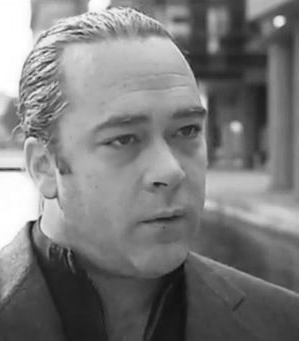 Patrick Henningsen
Patrick Henningsen
21st Century Wire
Much is being made by the international media and western politicians about recent alleged chemical weapons attacks in northern Syria, with speculation rife regarding which side is responsible.
Too few are asking the most fundamentally important question here: were any real conventional chemical weapons actually used at all? Indeed, it’s a question worth asking.
On March 19, it was reported that missiles were fired that contained ‘a chemical substance’ into Khan al-Assal village near Syria’s northern city of Aleppo. The incident is said to have claimed some 25 lives with many others injured following a series of chemical explosions, where some witnesses reported “the smell of chlorine in the air”, prompting strong speculation that munitions deployed during the incident had released ‘a deadly chlorine gas’.
The Syrian government is blaming the rebels, and the rebels are blaming the Syrian armed forces. Lines are also being drawn inside the UN Security Council.
The term ‘Scud missile’ has also been injected into the mix – itself, an established and recognised WMD media brand name made infamous during Saddam Hussein’s reign prior to 2003.
Qassim Saadeddine, a rebel commander in Aleppo, told Reuters by telephone last week, “We were hearing reports from early this morning about a regime attack on Khan al-Assal, and we believe they fired a Scud with chemical agents”.

House Intelligence Committee chair Mike Rogers is pushing for a WMD guilty verdict against Assad.
The US leadership also seem convinced that forces loyal to President Bashar al Assad are the only party in Syria who would possibly possess, and deploy, chemical weapons on the field of battle. Both President Barrack Obama and US House Intelligence Committee chair Mike Rogers have already made sweeping statements to that effect this past week – but how much truth is actually in such statements?
What we do know is that US-led NATO and Gulf state allies are already neck-deep in a proxy war in Syria, both funding and arming various elements of the rebel opposition confab. Heavy pressure is being put the bear on the Syrian government by the west, with US-lead NATO allies having stated their ultimatum in precious months – that should any such weapons be found in the battlefield, it would be a ‘red line’ crossed, and would give the west a justification for direct military intervention in the conflict.
The debate will continue to rage on both sides about who set-off such attacks, further thrusting this issue into a media-driven propaganda and counter-propaganda downward spiral, fought in public through the UN Security Council and opposing media outlets.
Were chemical weapons really used in Aleppo?
Though no longer stationed inside Syria, even U.S. Ambassador Robert Ford is on record as stating that the Obama administration has no evidence so far to who fired the chemical attack accusations, or that an actual chemical weapons attack occurred at all.
UN Secretary General Ban Ki Moon says he intends to investigate the Aleppo incident, but already there are complaints from other member states, that the US and Britain might be delaying this process by injecting further unsubstantiated reports of another Damascus ‘chemical attack’ – perhaps a red herring of sorts, included to divert attention from ‘who did what’ in Aleppo. French UN Ambassador Gerard Araud entered this alleged new incident into the record, based on the Syrian National Coalition’s own allegations of a second chemical weapon attack last Tuesday in the Damascus.
This struggle to control the narrative is almost inseparable from the NATO and Gulf alliance’s own vested interests on the ground in Syria.
The UN Russian Security Council envoy Vitaly Churkin has described some of these new claims as mere “propaganda balloons.”
Churkin added, “As far as I know, there is only one allegation of the use of chemical weapons…. There have been no other allegations”. Churkin has tried to delineate the two separate incidents by explaining, “To me, a concern which I expressed in the Council, was that this was really a way to delay the need for immediate, urgent investigation of allegations pertaining to March 19 (chemical attack) by raising all sorts of issues”.
The truth of what happened in Aleppo might be something completely different than the initial media narrative of events.
According to recent reports found at SyriaTruth.org which also includes some very relevant comments by human rights investigator Nizar Nayouf, a rebel paramilitary group called “Front Victory” reportedly led by foreign fighters and under the guidance of Turkish Intelligence last August 2012, had seized a chlorine gas (possibly CL17) bottling plant located some 50km east of Aleppo. The UN authority was apparently made aware of this at the time, and despite efforts by the Russians to persuade rebel militants to withdraw from this site and allow it to be occupied by neutral international observers, the rebels refused.
“In the end it was agreed to close the lab, but remained cylinders in the laboratory, where the gunmen refused remove them and move them to a safe place or dropped into the Euphrates River.”

Evidence suggests industrial chlorine was taken from factory and used by rebels to make bombs.
The lab in question is said to have contained dozens of large chlorine disc, each weighing nearly 100 kilograms. Aside from the obvious danger of assembling makeshift chlorine bombs, by some people’s estimates, there was enough stock present at the time “to sterilise an entire medium size city’s water supply for a month.”
There is some evidence to suggest that the rebel group known as “Front Victory”(name translated from Arabic) is no stranger to both violent insurgency, or the use of chlorine bombs for terrorist purposes.
The same online report also describes the group’s previous destabilisation exploits in Iraq here (translated from Arabic to English):
“Front Victory” has experience in the use of chlorine gas as a chemical weapon to Iraq. After the withdrawal of the U.S. military, and in the context of the Jordanian-Saudi intelligence war in Iraq to undermine the Maliki government…
(…) Jordanian intelligence proceeded to facilitate the smuggling of chlorine gas from Jordan to the organization known as “Islamic State of Iraq”, the first to use chlorine gas technology (with the help of Jordanian Intelligence and Saudi Arabia) as a “chemical weapon” – a taboo issue in the media in the context of covering genocide….
Given the fact that the “first generation” and “second generation” of the founders and staff of “Front Victory” [related to ‘al Nusra Front’] hailed originally out of the “Islamic State of Iraq” organisation, they were the only ones among the insurgent Syrians who are schooled in this technique. In addition, the organization “Islamic State of Iraq” deliberately to be the first installments of his gunmen who were sent to Syria as of fall 2011…
Weeks ago, “Front Victory” are reported to have begun manufacturing chlorine gas shells to be used in mortars and homemade rockets around Aleppo, utilizing the stock from the chlorine gas plant. Note that the said missile was launched from an area “Kafr Daal” in northwest of Aleppo.”
(…)”its cargo of chlorine gas, with the effects that left it in the area of the explosion. (…) Two British chemist commented… (…) One British chemists said without hesitation, “the effects of chlorine gas combustion.” The second said, “chemical or gaseous nature can be transformed from a liquid to a gas, but I can not identify.”
Numerous historical references to Iraqi insurgent chlorine attacks are available through news archives online, with one incident in 2006 clearly described below, but usage of chlorine munitions dates back as far as World War I in Europe. Note the following summary currently available from Wikipedia:
“Chlorine bombings in Iraq began as early as October 2006, when insurgents in Al Anbar province started using chlorine gas in conjunction with conventional vehicle-borne explosive devices.
The inaugural chlorine attacks in Iraq were described as poorly executed, probably because much of the chemical agent was rendered nontoxic by the heat of the accompanying explosives.[1]Subsequent, more refined, attacks resulted in hundreds of injuries, but have proven not to be a viable means of inflicting massive loss of life. Their primary impact has therefore been to cause widespread panic, with large numbers of civilians suffering non life-threatening, but nonetheless highly traumatic, injuries.
Chlorine was used as a poison gas in World War I, but was delivered by artillery shell, unlike the modern stationary or car bombs. Still, its function as a weapon in both instances is similar. Low level exposure results in burning sensations to the eyes, nose and throat, usually accompanied by dizziness, nausea and vomiting. Higher levels of exposure can cause fatal lung damage; but because the gas is heavier than air it will not dissipate until well after an explosion, it is generally considered ineffective as an improvised chemical weapon.”
In the corridors of the UN, it would benefit certain parties to buy some time right now, in order to either legally reclassify makeshift chlorine munitions as conventional ‘chemical weapons’, or the build another case around the alleged chemical attack in Damascus.
NATO looking for its green light to escalate
Based on the US and NATO’s promise of military intervention in the event of any chemical attack and their stated goal of Regime change in Syria, the motivation of qui bono resides exclusively in both the rebel’s and the NATO-Gulf alliance interests, and not in the interests of Bashar al Assad’s Syria government.
Despite the western media’s aggressive pursuit of a chemical weapon aka ‘WMD’ narrative in Syria – official statements out of Washington, Paris and London alluding to a guilty verdict for the Assad regime, does not actually square with the facts on the ground. In the case of Aleppo, there is no actual evidence of made-for-purpose, military grade chemical weapons being deployed by either side, and thus efforts to substantiate a case for foreign military on this basis are, as yet, non existent.

UN appoints Swede Ake Sellstrom to play the role of Hans Blix.
UN head Ban Ki Moon has just appointed a Swedish scientist, Ake Sellstrom, as his new head of a chemical weapons investigations team for Syria. As with his Scandinavian predecessor, Hans Blix, Sellstrom will lead the fact-finding mission to determine the existence of WMD’s in Syria.
The comparisons to Iraq in 2003 are obvious here. One would hope that lessons learned from Iraq, namely, building a case a military intervention based on a pre-existing conclusion, based mainly on ambiguous association, or fabricated intelligence – would have already been learned by the west, and thus should avoided at all costs.
The elephant in the room is this: NATO, its political leaders and the western media have yet to acknowledge the most obvious fundamental flaw in their own aggressive position towards Syria – that their own diplomatic objectivity is effectively disqualified by the fact that they are financing and arming a parallel government to takeover in Syria. This fact alone renders the UN almost inoperable in terms of reaching any fair diplomatic solution to this crisis.
Could this really be Déjà vu Iraq?
READ MORE ISIS NEWS AT: 21st Century Wire ISIS Files
SUPPORT 21WIRE – SUBSCRIBE & BECOME A MEMBER @21WIRE.TV















